JOSEF FLOCH

Ein Künstler des Hagenbundes









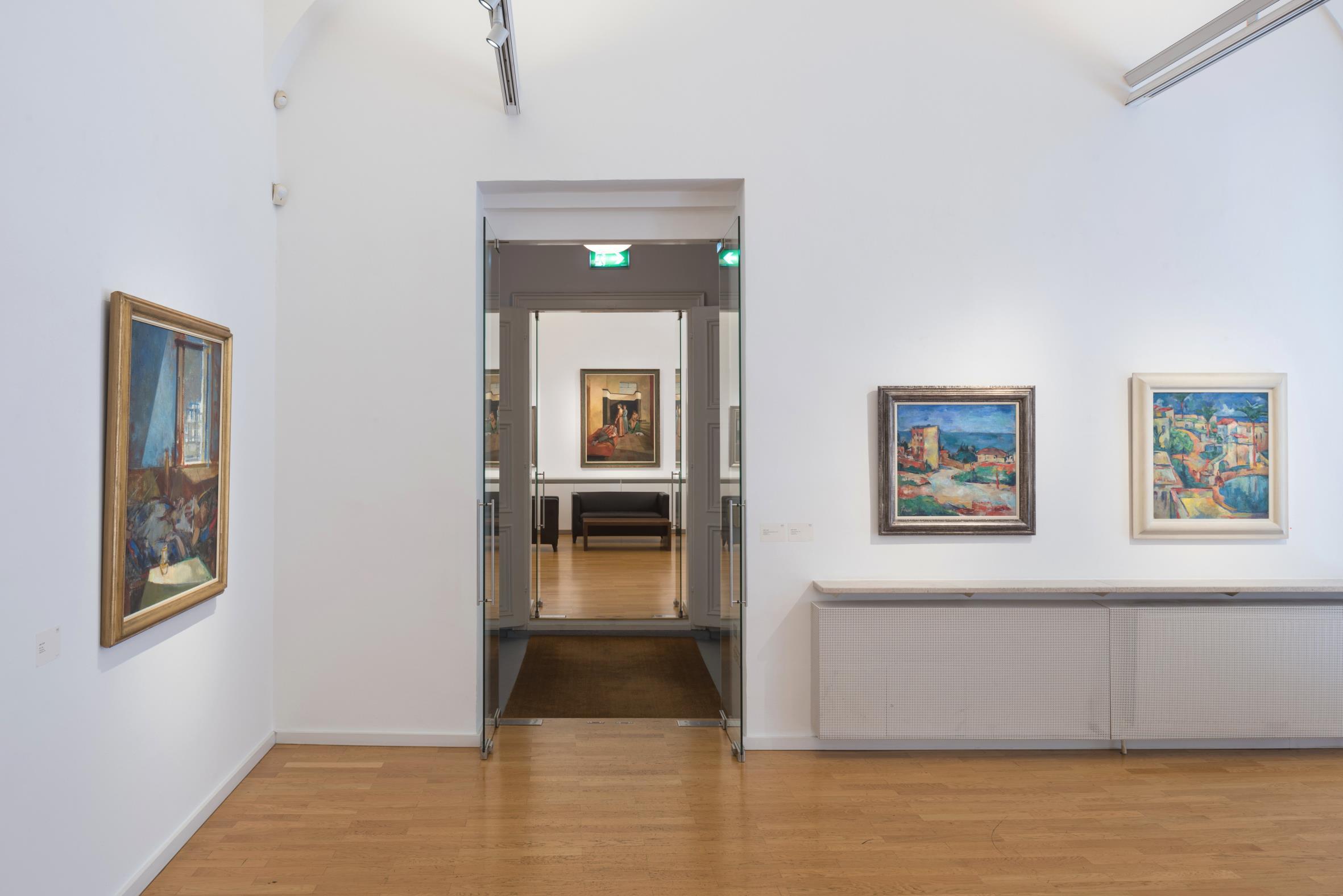



"Floch ist ein Maler, der es nie versäumt, jenes Unwägbare zu berücksichtigen, das der Mensch in sich trägt und das die Dichter die Seele nennen eine Seele, die er durch absurde und geheime Kommunikation in allem, was ihn umgibt, erkennt." schrieb Jean Cassou, Direktor des Pariser Musée National d’Art Moderne, anlässlich einer Eröffnung 1964 in der Forum Gallery in New York.
In der Tat weist Flochs Werk moderne Merkmale seiner Zeit auf, gleichzeitig aber auch Qualitäten Alter Meister; die menschliche Figur steht zumeist im Mittelpunkt seines Werks. Bewusst wendet er sich gegen die Abstraktion und erlangt, als einer der wichtigsten Vertreter des Neo Humanismus, besonders in Paris und New York an Bedeutung. Der Ausdruck von Isolation und unerfüllter Hoffnung sowie eine geheimnisvolle Geometrie stehen bei Flochs Werken in Kontrast zu einem außergewöhnlichen Feingefühl und einer stillen Zärtlichkeit.
Josef Floch (1895, Wien 1977, New York) war ein jüdisch österreichischer Maler, der es bereits zu Lebzeiten schaffte, in drei der wichtigsten Kunstmetropolen Karriere zu machen Wien, Paris und New York.
Zwischen 1913 und 1918 studierte er zunächst an der Wiener Kunst Akademie u.a. bei Rudolf Bacher, einem der Mitbegründern der Wiener Secession. Entgegen den akademischen Lehrmethoden wollte Floch jedoch Bilder von Menschen aus dem täglichen Leben und in einer freieren Art und Weise malen. So lehnt er die konventionelle, akademische Malerei ab und tritt 1919 dem Wiener Hagenbund bei.
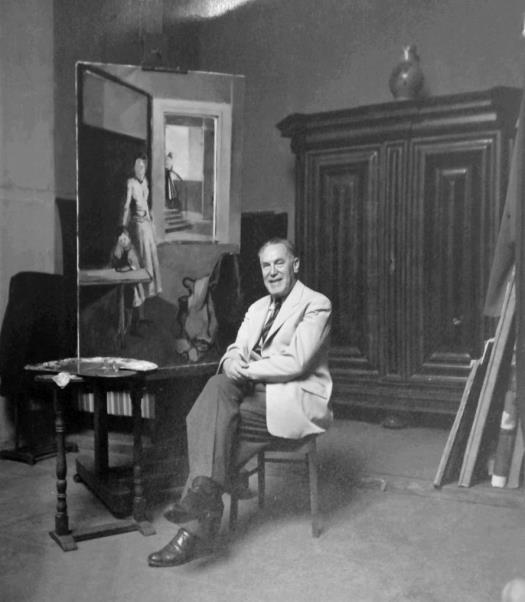
In Wien fühlt sich der junge Künstler jedoch eingeengt und begibt sich 1923 auf eine mehrmonatige Reise, die ihn u.a. nach Caesarea führt und die er in ausdrucksstarken Bildern festhält. 1925 zieht Floch nach Paris. Schnell fasst er in seiner neuen Heimat Fuß und stellt 1929 in der renommierten Galerie von Berthe Weill aus, die einige der größten Namen des beginnenden 20. Jahrhunderts zeigt, darunter Picasso, Matisse, Derain und Modigliani. Auf seine vielbeachtete Ausstellung bei Berthe Weill folgen zahlreiche weitere, u.a. beim Salon des Tuileries (1930), der Galerie Pierre Colle (1932), dem Kunstverein Winterthur (1934) oder der Galerie Jeanne
Castel (1936). Das Jue de Paume Museum in Paris sowie der französische Staat kaufen mehrere seiner Gemälde an.
1941 muss Floch mit seiner Familie Paris verlassen, um sich so der Verfolgung durch die Nationalsozialisten zu entziehen. Er lässt seine beeindruckende Karriere in Europa hinter sich und geht nach New York City, wo er bis zu seinem Tod lebt und arbeitet. Nach seiner Ankunft in New York macht er schnell auf sich aufmerksam. In seinen Bildern kontextualisiert er modern und unkonventionell die amerikanische Architektur, indem er einen Diskurs zwischen Mensch und Umgebung startet.
Noch 1941 stellt er im Toledo Museum of Art (Ohio) aus, Präsentationen in der Pennsylvania Academy of The Fine Arts (1944), dem Whitney Museum of American Art in New York (1945) und anderen folgen. Auch amerikanische Sammlungen, wie jene des Metropolitan Museum of Art in New York, erwerben Arbeiten des Künstlers.
Flochs enge Verbundenheit zu Frankreich hält auch nach dem Krieg an. Jean Cassou, der schon 1936 über sein Werk geschrieben hatte, besuchte ihn in New York. Auch andere französische Autoren zeigen Interesse für ihn: Maximilien Gauthier widmete ihm eine Monographie, Germain Bazin schrieb über ihn in seiner großen Kunstgeschichte von der Vorgeschichte bis zur Neuzeit. Neben zahlreichen internationalen Auszeichnungen wurde Floch als erster amerikanischer Künstler 1963 in den Stand des Ritters des Ordens der Kunst und Literatur der Französischen Republik (Chevalier des arts et lettres) erhoben. Erst spät, im Jahr 1972, zeigen die Österreichischen Galerien Belvedere eine umfangreiche Retrospektive und wird der Künstler auch in seiner Heimat gewürdigt.
JOSEF FLOCH interpreter of silence"Floch is a painter who never fails to take into account that imponderable which man harbors within himself and which poets call the soul a soul that by abscure and secret communication he recognizes in everything surrounding him." ... wrote Jean Cassou, director of the Musée National d'Art Moderne in Paris, at a 1964 opening at the Forum Gallery in New York.
Indeed, Floch's work exhibits modern characteristics of his time, but at the same time also Old Master qualities; the human figure is mostly at the center of his work. He consciously turned against abstraction and, as one of the most important representatives of Neo Humanism, gained prominence, especially in Paris and New York. In Floch's works, the expression of isolation and unfulfilled hope, as well as a mysterious geometry, contrast with an extraordinary sensitivity and a quiet tenderness.
Josef Floch (1895, Vienna 1977, New York) was a Jewish Austrian painter who managed to make a career in three of the most important art capitals during his lifetime Vienna, Paris and New York.
Between 1913 and 1918, he first studied at the Vienna Art Academy under Rudolf Bacher, among others, one of the co founders of the Vienna Secession. Contrary to the academic teaching methods, however, Floch wanted to paint pictures of people from everyday life and in a freer manner. Thus he rejected conventional, academic painting and joined the Vienna Hagenbund in 1919.
In Vienna, however, the young artist felt constricted and in 1923 embarked on a journey lasting several months, which took him to Caesarea, among other places, and
which he captured in expressive paintings. In 1925 Floch moved to Paris. He quickly gained a foothold in his new home and in 1929 exhibited at Berthe Weill's renowned gallery, which featured some of the biggest names of the early 20th century, including Picasso, Matisse, Derain and Modigliani. The highly acclaimed exhibition at Berthe Weill was followed by numerous others, including at the Salon des Tuileries (1930), the Galerie Pierre Colle (1932), the Kunstverein Winterthur (1934), and the Galerie Jeanne Castel (1936). The Jue de Paume Museum in Paris as well as the French state purchased several of his paintings.

In 1941, Floch was forced to leave Paris with his family to escape Nazi persecution. He leaves behind his impressive career in Europe and goes to New York City, where he lives and works until his death. After arriving in New York, he quickly draws attention to himself. In his paintings he contextualizes American architecture in a modern and unconventional way, starting a discourse between man and his environment.
As late as 1941 he exhibits at the Toledo Museum of Art (Ohio), presentations at the Pennsylvania Academy of The Fine Arts (1944), the Whitney Museum of American Art in New York (1945) and others follow. American museums, such as the Metropolitan Museum of Art in New York, also acquired works by the artist.
Floch's close ties to France continued after the war. Jean Cassou, who had already written about his work in 1936, visited him in New York. Other French authors also showed interest in him: Maximilien Gauthier dedicated a monograph to him, Germain Bazin wrote about him in his great history of art from prehistory to modern times. In addition to numerous international awards, Floch was the first American artist to be raised to the rank of Knight of the Order of Arts and Letters of the French Republic (Chevalier des arts et lettres) in 1963. It was not until late, in 1972, that the Austrian Belvedere Galleries showed an extensive retrospective and the artist was also honored in his homeland.


Resting Woman II, 1946 48
RestingWomanII,1946 48
Öl auf Leinwand, 66 x 81 cm
Oiloncanvas,26x318/9in
Pallauf cat. rais. 389 €45.000

In the Studio I, 1957 IntheStudioI,1957
Öl auf Leinwand, 71 x 71 cm Oiloncanvas,28x28in Pallauf cat. rais. 577 €35.000

Wiener Bub, 1919 WienerBub,1919
Öl auf Leinwand, 47 x 31 cm Oiloncanvas,181/2x121/5in Pallauf cat. rais. 32a
● unverkäuflich / not for sale

Zwei Kinder, um 1930 Twochildren,um1930
Mischtechnik auf Papier, 29,2 x 21,3 cm (Bildausschnitt) Coloredpencilandwatercoloronpaper,111/2x82/5in
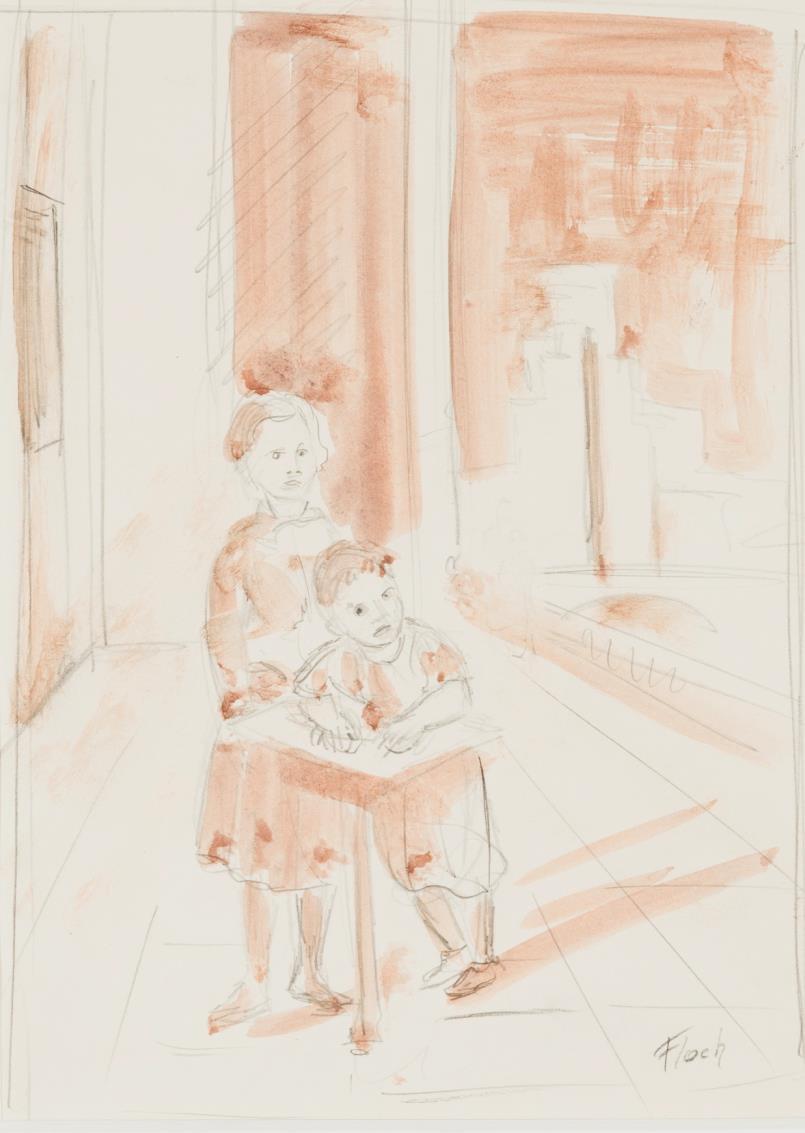


Rest II, 1956 RestII,1956
Öl auf Leinwand, 100 x 81,5 cm Oiloncanvas,392/5x321/9in Pallauf cat. rais. 567
€75.000

Model resting, 1950 Modelresting,1950
Öl auf Leinwand, 66,5 x 41 cm Oiloncanvas,261/5x161/9in
Pallauf cat. rais. 440

Sitting Nude in Studio II, 1965 70
Silentafternoon(SittingnudeinstudioII),1965 70
Öl auf Leinwand, 69 x 64 cm
Oiloncanvas,271/5x251/5in
Pallauf cat. rais. 865 €32.000



Mainsons dans un paysage, um 1925 HousesinLandscape,um1925
Öl auf Leinwand, 58 x 61,5 cm Oiloncanvas,224/5x241/5in
Pallauf cat. rais. 100

City in Normandie, 1959 CityinNormandie,1959
Öl auf Leinwand, 54 x 81 cm Oiloncanvas,211/3x318/9in
Pallauf cat. rais. 652 €35.000

Ocean inlet, 1970
OceanInlet,1970
Öl auf Leinwand, 77 x 61 cm
Oiloncanvas,301/3x24in
Pallauf cat. rais. 896 €25.000

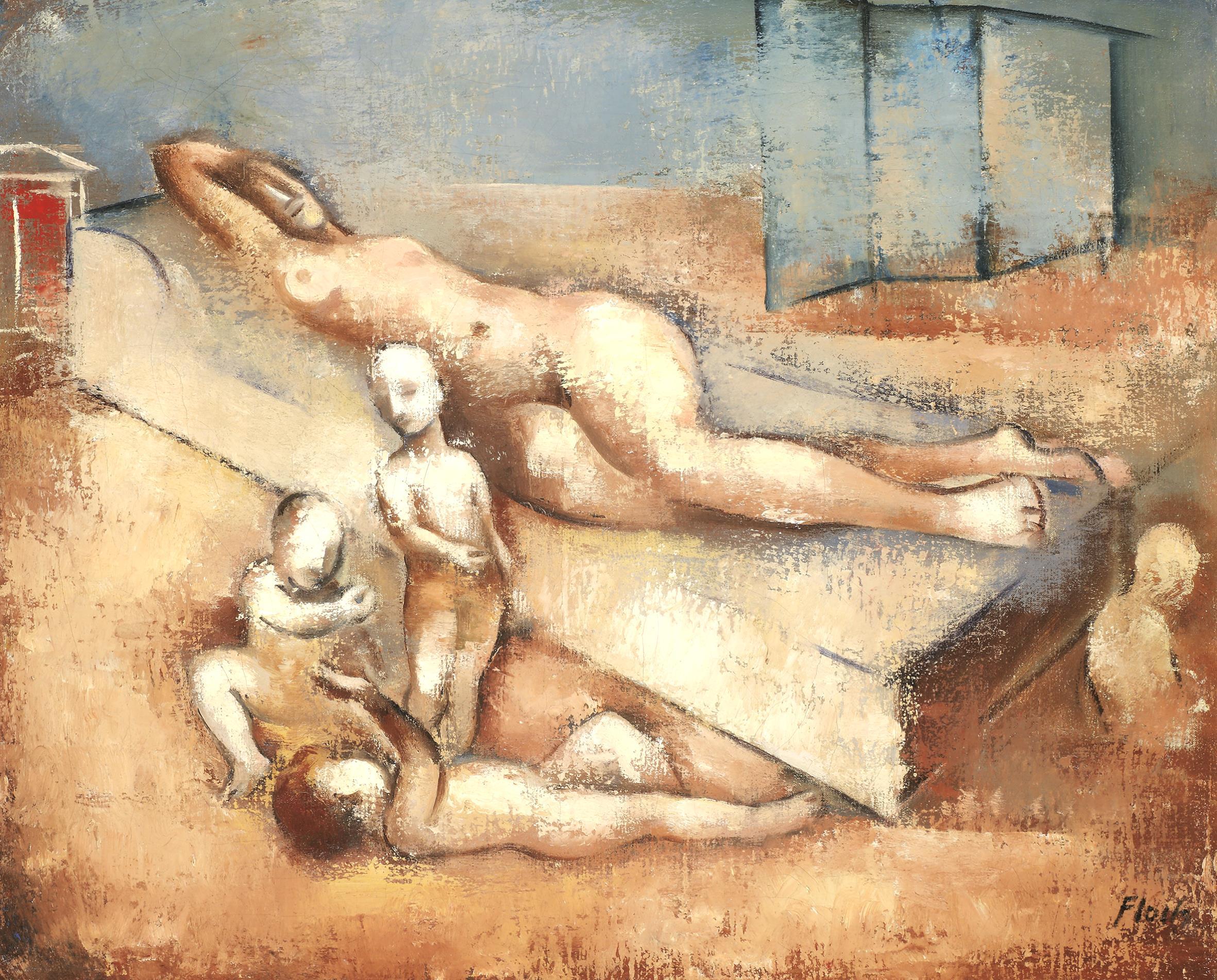

Maternité, um 1928 30 Maternité,um1928 30
Öl auf Leinwand, 60,3 x 73,6 cm Oiloncanvas,232/3x29in
Pallauf cat. rais. 175
€55.000

Porträt eines jungen Mannes, 1927 Portraitofayoungman,1927
Öl auf Leinwand, 62 x 51 cm Oiloncanvas,242/5x201/9in
Pallauf cat. rais. 129
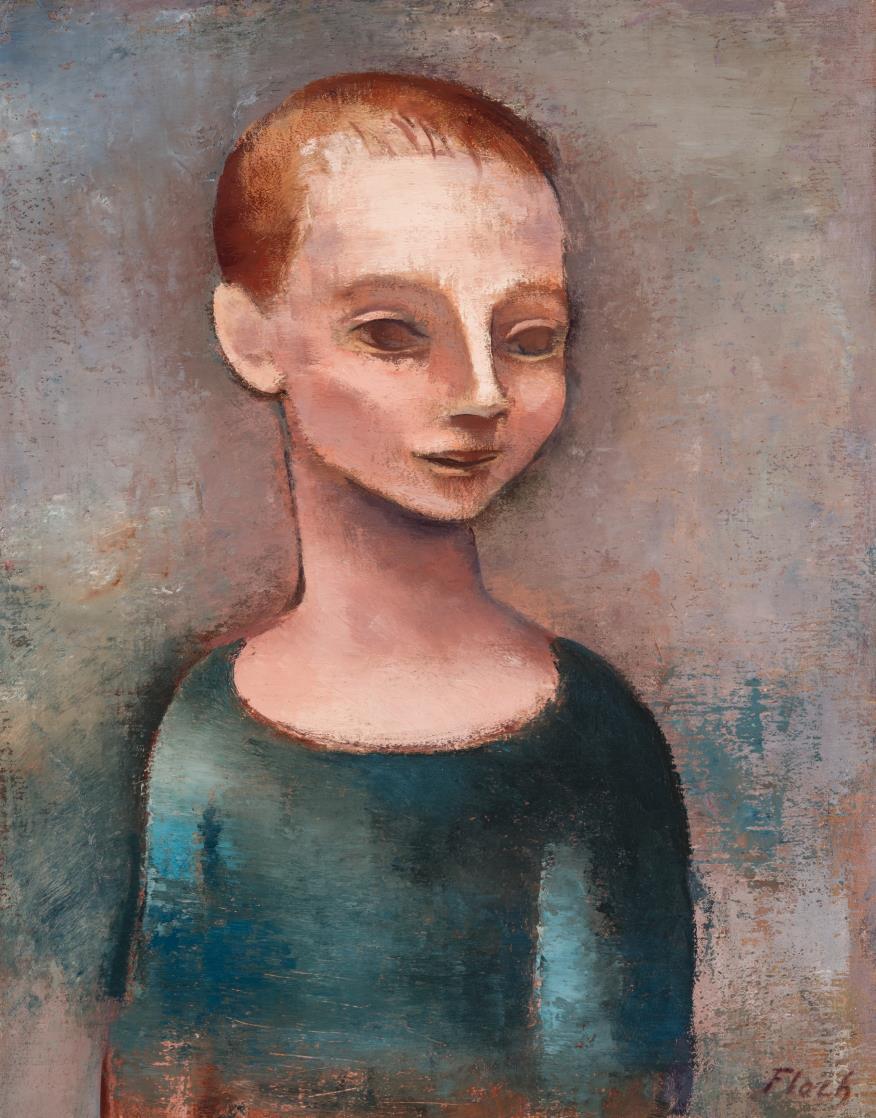
Femme assise dans une chambre bleue, 1928 30
Femmeassisedansunechambrebleue,1928 30
Öl auf Leinwand, 114 x 73,5 cm Oiloncanvas,448/9x288/9in
Pallauf cat. rais. 195
verkauft / sold

Homme avec chien II, 1928
HommeavecchienII,1928
Öl auf Leinwand, 93 x 65 cm
Oiloncanvas,363/5x253/5in
Pallauf cat. rais. 160
€55.000
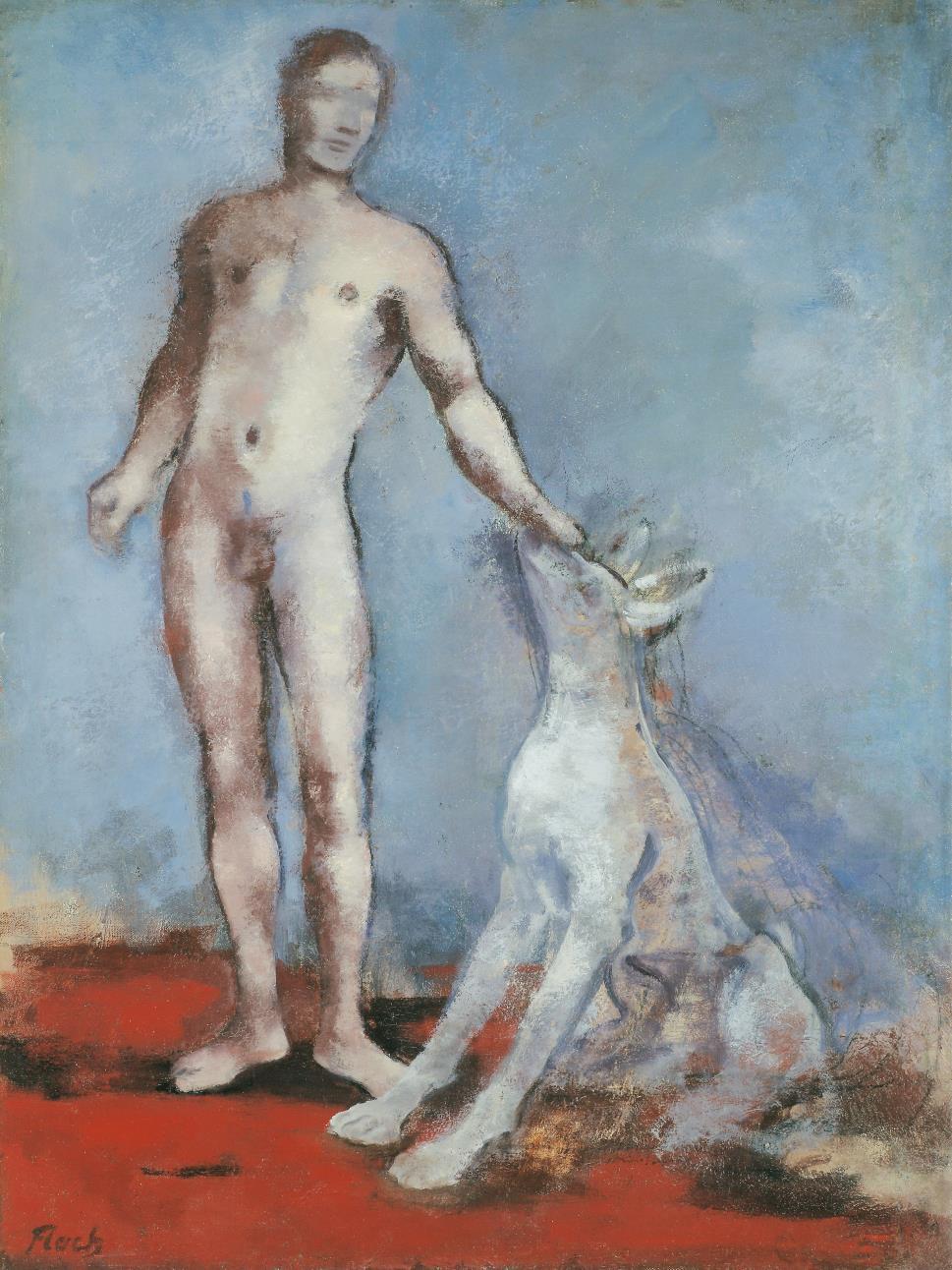
Vorzeichnung zum Gemälde `Homme avec chien` (1928), 1928 Studyforthepainting`Hommeavecchien`(1928),1928
Kreide auf Papier, 27,6 x 22,3 cm (Bildausschnitt) Coloredpencilonpaper,101/1x84/5in



Cäsarea in Israel, 1923 CäsareainIsrael,1923
Öl auf Leinwand, 65 x 60 cm Oiloncanvas,253/5x233/5in Pallauf cat. rais. 69

Am Tiberias See Israel, 1923
AtLakeTiberiasIsrael,1923
Aquarell und Tusche auf Papier, 52,5 x 38,5 cm Watercolorandinkonpaper,202/3x151/5in

Pièce silencieuse, 1937 Piècesilencieuse,1937
Öl auf Leinwand, 145 x 110 cm Oiloncanvas,571/9x432/7in Pallauf cat. rais. 267
Preis auf Anfrage / price on request

Stairway III, 1946 StairwayIII,1946
Öl auf Leinwand, 83,5 x 59,5 cm Oiloncanvas,328/9x232/5in Pallauf cat. rais. 383a

Terrace in New York III, 1945
TerraceinNewYorkIII,1945
Öl auf Leinwand, 90 x 66 cm Oiloncanvas,352/5x26in
Pallauf cat. rais. 370 €60.000



Still Life, 1960 StillLife,1960
Öl auf Leinwand, 65 x 54 cm Oiloncanvas,253/5x211/3in Pallauf cat. rais. 712 €35.000

Still life with fruit and vase, 1955
Stilllifewithfruitandvase,1955
Öl auf Leinwand, 61,5 x 46,5 cm
Oiloncanvas,241/5x181/3in
Pallauf cat. rais. 542 €32.000

Vorstudie zu "Still life with a sitting woman", 1950 52 Studyfor"Stilllifewithasittingwoman",1950 52
Farbkreide auf Papier, 23,7 x 21 cm Colouredcrayononpaper,91/3x81/3in



Ruhende, 1962 Resting,1962
Öl auf Leinwand, 100 x 90 cm Oiloncanvas,392/5x352/5in
Pallauf cat. rais. 788
Preis auf Anfrage / price on request

Brooding Women I, 1950
BroodingWomenI,1950
Öl auf Leinwand, 74 x 89 cm
Oiloncanvas,291/9x35in
Pallauf cat. rais. 422 €65.000



 Josef Floch | Wien Paris New York: Eine Spurensuche
Josef Floch | Wien Paris New York: Eine Spurensuche



W&K Wienerroither & Kohlbacher Strauchgasse 2, 1010 Vienna Tel.: + 43 1 533 99 77 office@w k.art www.w k.art

Editorial coordination: Dr. Sascha Worrich Photos and exhibition views: © Christoph Schlessmann
Preise gelten inkl. MwSt. für die Dauer der Ausstellung. Alle Angaben des Kataloges dienen lediglich der Information des Käufers. Sie sind ohne Gewähr, Irrtum vorbehalten. Prices are incl. VAT for the duration of the exhibition. All data in the catalog are for the information of the buyer only. They are without guarantee, errors excepted.
